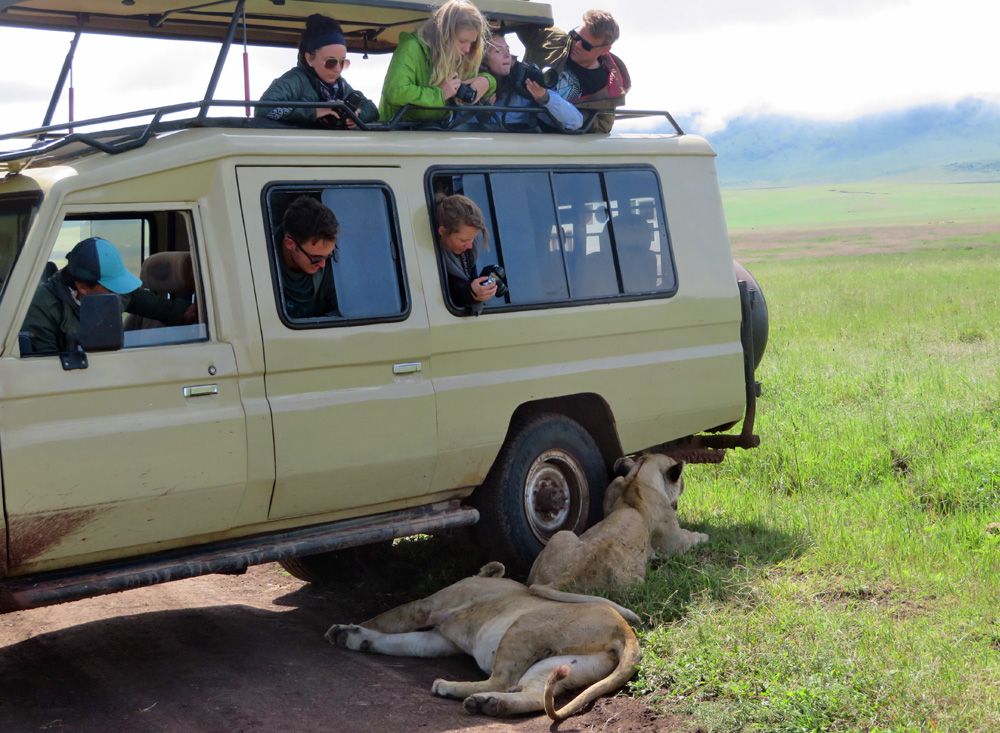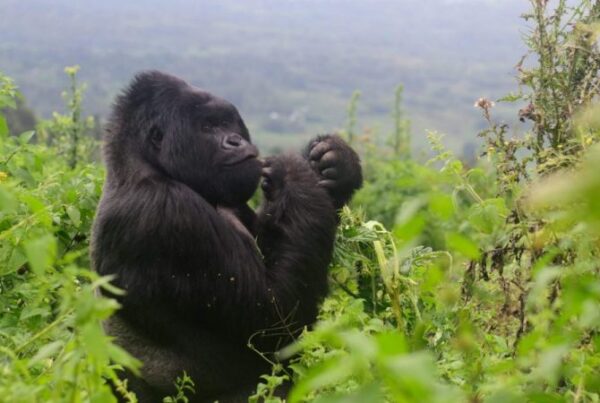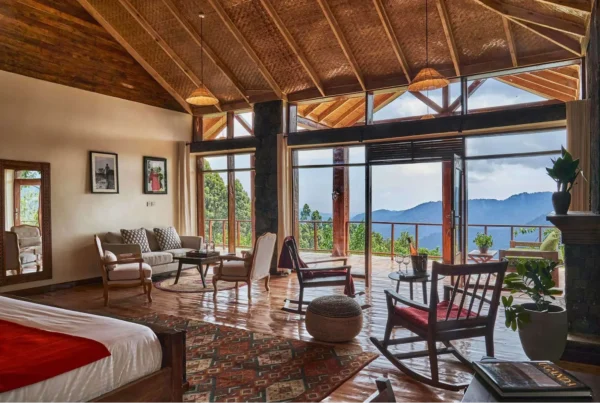A Family Safari in Queen Elizabeth: What to Expect
The Ultimate Family Adventure in Uganda
A family safari represents more than a holiday; it is an immersive journey into nature, a rare opportunity for both children and adults to witness the wonders of the wild, and a chance to create memories that endure for a lifetime. Queen Elizabeth National Park, Uganda’s most iconic wildlife destination, has emerged as one of the safest, most accessible, and diverse parks in Africa for families seeking a balanced combination of adventure, education, and comfort.
For parents considering their first safari experience with children, the prospect may seem daunting. Concerns about safety, accessibility, and engagement often dominate considerations. Yet Queen Elizabeth has been designed to accommodate families in a manner that fosters curiosity, learning, and responsible interaction with the environment. From tree-climbing lions in Ishasha to hippos in the Kazinga Channel, from scenic crater lakes to guided educational walks, every aspect of the park is structured to ensure that both adults and children can fully enjoy the safari experience.
A family safari here is not only about observing wildlife but also about connecting with nature, understanding ecosystems, and appreciating conservation. Each encounter is layered with opportunities for storytelling, learning, and shared excitement, making the journey as much about personal growth as it is about leisure.
Understanding Queen Elizabeth for Family Travelers
Queen Elizabeth National Park spans nearly 2,000 square kilometers across Uganda’s western Rift Valley, encompassing a remarkable variety of habitats that make it ideal for family safaris. The park’s diversity includes expansive savannahs, wetlands, riverine forests, volcanic crater lakes, and forested gorges, all of which are home to over ninety-five mammal species and more than six hundred bird species.
For families, this diversity is particularly valuable. While adults may be captivated by predator-prey interactions and bird behavior, children often find fascination in observing elephants, warthogs, or the playful antics of hippos. The park’s accessibility is also a major advantage; well-maintained roads and family-friendly lodges ensure safe travel, reducing the physical strain often associated with safaris in more remote regions.
Queen Elizabeth’s wildlife density, coupled with its variety of ecosystems, allows families to experience multiple habitats within a single day. A morning game drive in Kasenyi Plains can be followed by a boat safari along the Kazinga Channel, creating opportunities for continuous discovery and engagement without the fatigue of long-distance travel.
Preparing for a Family Safari
Preparation is central to ensuring a smooth and enjoyable safari experience for families. Clothing choices, equipment, health precautions, and expectations must all be addressed. Lightweight, neutral-colored clothing is recommended for blending into natural surroundings and minimizing animal disturbance. Hats, sunglasses, and sunscreen are essential for sun protection, while insect repellent reduces exposure to mosquitoes and other insects.
Children require special attention, including suitable footwear, hydration, and snacks. Binoculars and cameras are encouraged for older children to cultivate observation skills and interest in wildlife photography. First-time family safari goers are advised to discuss the itinerary with guides in advance, tailoring activities to the ages and abilities of children, ensuring both safety and engagement.
Understanding wildlife behavior is also crucial. Parents are often briefed on how to manage close encounters, maintain safe distances, and interpret animal signals. This preparation fosters confidence and ensures that children remain both safe and engaged throughout the safari.
Family-Friendly Game Drives
Game drives are central to the family safari experience, providing the first opportunity to witness Africa’s iconic wildlife in their natural habitat. Vehicles are typically modified for comfort and safety, with elevated seating that allows children unobstructed views. Guides ensure that drives progress at a pace suitable for families, allowing frequent stops for observation, photography, and explanation.
Early mornings are ideal for wildlife activity, when predators emerge, elephants move to water sources, and birds sing in the trees. Late afternoons are equally rewarding, as the golden light of sunset illuminates the savannah and nocturnal species begin to stir. Guides often incorporate storytelling, teaching children about predator-prey dynamics, social structures within herds, and animal adaptations, turning every sighting into an educational moment.
The Ishasha sector, with its famed tree-climbing lions, is particularly captivating for children, who are often amazed by lions resting across fig tree branches. The unique behavior of these animals creates an unforgettable visual experience while reinforcing lessons about animal adaptation and survival.
Boat Safaris along the Kazinga Channel
Complementing land-based drives, a boat safari along the Kazinga Channel provides families with a safe, accessible, and visually rich wildlife encounter. The channel supports an extraordinary concentration of hippos, Nile crocodiles, and waterbirds, making it one of the park’s most dynamic ecosystems.
Boat safaris allow families to observe wildlife from a close yet secure distance, fostering excitement without compromising safety. Guides interpret behaviors such as hippo interactions, crocodile basking, and bird hunting techniques, providing children and adults with engaging narratives that connect biology, behavior, and conservation. Reflections on the water, changing light, and interaction between species add a scenic dimension, enhancing photography opportunities and family storytelling.
The Kazinga Channel also offers lessons in aquatic ecology, showing how rivers link ecosystems, sustain wildlife, and support local communities. For children, this is an opportunity to see real-world applications of ecological concepts learned in classrooms, reinforcing curiosity and understanding.
Engaging Children Through Birdwatching
Queen Elizabeth’s avian diversity creates another layer of engagement for families. With over six hundred species recorded, including the shoebill stork, African fish eagle, and numerous hornbills and weavers, birdwatching can be introduced even to younger children as an interactive and educational activity.
Guides often provide simple explanations of behavior, feeding patterns, and migration, making complex ecological concepts accessible. Birding also teaches patience and observation skills, allowing children to develop attentiveness and appreciation for smaller, often overlooked species. Through binoculars and field guides, children learn to identify species, understand their roles within ecosystems, and cultivate a sense of wonder about the natural world.
Exploring Crater Lakes and Scenic Areas
The crater lakes of Queen Elizabeth offer families a different type of safari experience. Surrounded by volcanic hills, these lakes provide calm and serene landscapes that are ideal for educational walks, photography, and reflection. Families are introduced to the interactions between aquatic ecosystems and terrestrial wildlife, observing birds, small mammals, and amphibians that inhabit these microhabitats.
Walking trails around crater lakes are safe for children under guidance, allowing close engagement with nature while instilling lessons in environmental stewardship. The combination of scenic beauty, wildlife observation, and educational narration creates an enriching experience that balances adventure with learning.
Accommodation and Family Comfort
Lodges and camps in Queen Elizabeth are designed to accommodate families, combining comfort with immersion in nature. Properties along the Kazinga Channel or in Ishasha provide spacious rooms, dining facilities, and safety features that ensure peace of mind. For children, accommodations often include family-sized units, shaded outdoor areas, and controlled access to wildlife viewpoints.
Eco-camps offer a more intimate bush experience, where children hear the sounds of hippos, lions, and birds from their tents. Parents are reassured by the presence of trained staff and security measures, allowing families to engage fully with the wilderness without compromising comfort.
The integration of accommodation with safari activities reduces travel time, ensuring that families can maximize engagement and minimize fatigue, a key consideration for children on multi-day safaris.
Educational and Cultural Engagement
Family safaris are enriched through community visits that highlight local culture, agriculture, and crafts. Children gain insight into traditional lifestyles, sustainable farming, and the coexistence of people and wildlife. Participating in cultural activities, such as craft demonstrations, storytelling, or traditional dance, enhances understanding and fosters respect for diverse ways of life.
Educational components of these visits teach conservation principles, showing how communities benefit from protecting wildlife and habitats. For children, this introduces concepts of responsibility, stewardship, and empathy, reinforcing the values embedded within the safari experience.
Health and Safety Considerations
Health and safety are paramount on family safaris. Families are advised to carry first-aid kits, maintain hydration, and adhere to park rules regarding wildlife distances. Vaccinations and preventive measures against malaria are typically recommended, and guides provide continuous supervision during drives, walks, and boat excursions.
Safety protocols also extend to vehicles, accommodation, and interaction with communities. Children are taught to respect boundaries, remain in vehicles during drives unless guided, and follow instructions for safe wildlife observation. These measures ensure that adventure is coupled with security, creating an environment where families can engage confidently with nature.
Seasonal Considerations for Families
The timing of a family safari influences both wildlife visibility and comfort. Dry seasons, from June to September and December to February, are particularly suitable for families, as roads are accessible, wildlife congregates near water sources, and insects are less abundant. Wet seasons, while providing lush landscapes and abundant birdlife, may pose challenges for mobility, particularly for families with young children.
Guides often adjust itineraries seasonally, balancing animal sightings, activity timing, and accommodation logistics to ensure a rewarding family experience regardless of the month. Awareness of seasonal variations enhances planning and allows families to anticipate optimal viewing conditions and comfort levels.
Photography and Memories
Photography forms an integral part of the family safari experience. Parents and children are encouraged to capture moments that illustrate wildlife behavior, landscapes, and shared experiences. From elephants crossing the savannah to hippos at the Kazinga Channel, photography allows families to preserve memories while fostering attention to detail and appreciation of natural beauty.
Guides often provide tips on framing, composition, and timing, ensuring that photographs are both visually compelling and respectful of wildlife. These images become tangible representations of the journey, reinforcing lessons learned and shared experiences.
Emotional and Developmental Benefits for Children
A family safari in Queen Elizabeth offers profound emotional and developmental benefits. Exposure to wildlife and nature fosters curiosity, creativity, empathy, and critical thinking in children. Observing animal behavior, tracking footprints, and participating in educational activities cultivates patience, attentiveness, and problem-solving skills.
Moreover, shared experiences strengthen family bonds, creating a sense of collective achievement and wonder. The combination of adventure, education, and cultural engagement ensures that children emerge from the safari not only entertained but also enriched and inspired.
An Unforgettable Family Journey
A family safari in Queen Elizabeth National Park transcends the traditional notion of a vacation. It is an educational expedition, an immersive adventure, and a profound encounter with the natural world. From game drives and boat safaris to birdwatching, crater lake exploration, and community engagement, every moment offers opportunities for learning, bonding, and appreciation of Africa’s extraordinary wildlife and landscapes.
For families seeking a safe, enriching, and unforgettable safari, it is strongly recommended that tours and safaris be arranged through WildHorn Africa. With their expertise, attention to detail, and commitment to both family comfort and conservation, every journey in Queen Elizabeth is transformed into a remarkable adventure that creates lasting memories while fostering understanding and respect for Uganda’s natural and cultural heritage.





 WildHorn Africa – Authentic and unforgettable tours across Africa, guided by local experts who know the land, wildlife, and culture best.
WildHorn Africa – Authentic and unforgettable tours across Africa, guided by local experts who know the land, wildlife, and culture best.


